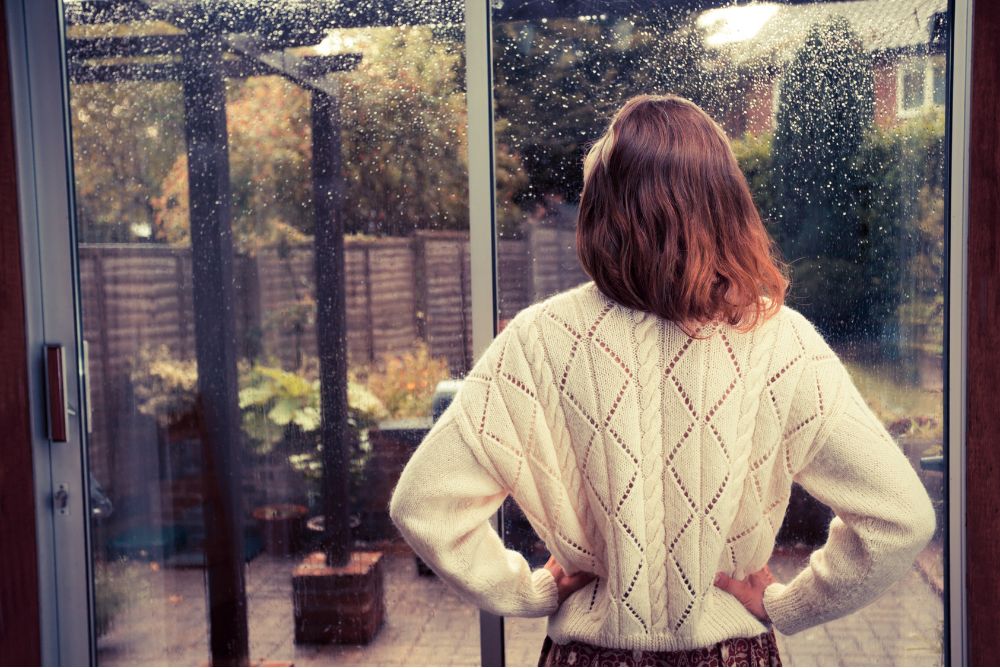Is your home flood-proof?

If you don’t live in a flood-prone area, you may not have paid too much thought to your flood defences. But according to the Environment Agency, around 1 in 6 homes in England are at risk of flooding and, as our climate gets warmer, those numbers are set to increase. When you add these statistics to the demand for new housing leading to more building on floodplains, it’s only natural to expect more houses to be at risk of flooding in the years to come. It is estimated that over 300,000 properties needing protection against rising water levels.
The first two storms of winter have swept across Scotland and Northern England with winds reaching 70mph. Heavy rainfall levelled trees, caused sinkholes, and tragically, even claimed lives. What was once a rare occurrence, now seems to be happening several times a year, so the shift in the landscape means a shift in thinking about how we protect ourselves.
Whether you already live in an area prone to floods, or you’re contemplating a move to a home near water, we take a look at everything you need to know, from flood resistance and resilience measures to finding the right home insurance.
How safe is living on a floodplain?
Many people love to live near water, whether by the coast or near a river – which is why there are plenty of people living in locations at risk of flooding. But, to make the level of risk clear to residents, the Environment Agency uses the following criteria:
Flood Zone 1 – low likelihood of flooding, with less than 1 in 1,000 chance every year.
Flood Zone 2 – medium likelihood, with 1 in 100 and 1 in 1,000 chance of river flooding per year; or between a 1 in 200 and 1 in 1,000 chance of sea flooding.
Flood Zone 3a – high likelihood, with a 1 in 100 or more probability of river flooding; or a 1 in 200 or more probability of sea flooding every year.
Flood Zone 3b – these areas are known as the ‘Functional Floodplain’, where water has to flow or be stored in times of flood.
Do you know which zone you’re in? If you are looking to buy, your searches should outline your flood risk. It’s important to be aware of which zone you home falls under and the according level of risk, so you can make a proper contingency plan – from protecting your property as best you can as well as ensuring you have comprehensive home insurance so that you can claim in the event you’re flooded.
How can you reduce the impact of flooding?
While you can never completely eliminate the risk of flooding, you can take steps to reduce the risk of water getting into your property, and minimise the damage if it does make it over the threshold. These methods are known as ‘flood resistance’ and ‘flood resilience’ and making sure you implement them can help you both manage the risk of your property being damaged and help to lower your insurance premium.
Flood resistance refers to the measures you can take to reduce the risk of water getting into your property, such as:
flood barriers for doors and windows – panels that can be temporarily added to your home to block water.
air brick covers – these fit over air bricks to stop flood water entering. They need removing after a flood has passed, to allow the bricks to dry out again.
non-return valves – these fit onto drains and pipes to prevent sewage flowing back through from the bathroom.
Flood resilience refers to measures you can take to minimise the level of damage to your property if water does get in, such as:
raising electrics
using water resilient materials for floors, walls, and insulation
installing a cavity drainage membrane for extra waterproofing

Top tip: A useful resource you may not have come across is an organisation called Flood Mary, the property flood resilience champion. The team use their own real-life experience of flooding and knowledge to create helpful guides and share advice.
Remember, the more resistance and resilience measures you have in place, the better the chance of keeping your home safe, and sourcing a suitable insurance policy.
Finding home insurance that suits you
It’s no secret that the UK has been battling some very wet weather over the last 10 years. February 2022 alone had three storms in the space of a week. With increasing storms and an already hardening insurance market, you will not be will surprised to hear that many insurers are reviewing which properties they see as a ‘flood risk’.
In assessing a property’s risk of flooding, insurers not only utilise their own claims experience, but also the information they can gain from flood mapping tools and the information that the homeowner can provide.
Insurers will consider the property’s:
History – is it located in an area that has flooded before?
Locality – is it near the coast/watercourse?
Features – does it have a basement?
Resilience – what flood preventions features are there?
Following this, insurers will give the property a score that indicates whether they can provide flood cover and, if so, on what terms. If they are unable to offer flood cover, they may choose to recommend you to Flood Re, the Government-backed scheme established to help those in high-risk areas obtain affordable insurance.
Why use an insurance broker
Finding the right flood insurance solution is something you should never have to do on your own and trying to find an insurer through an online aggregator with standard drop down tick boxes is near on impossible.
By talking to a broker, you benefit from extra support as they will:
Help you navigate around the questions insurers ask and make sure you are answering them accurately. Inaccurate information can lead to a claim not being covered or the policy being voided.
Consider what mitigation is around your property to prevent a flood claim. For example, whether you have drainage ditches or flood plains nearby or if your property is on a higher level than an area that is known to flood.
Explain to insurers what flood mitigation you have around your property. The more measures you’ve taken, such as raising the electrics and using water-resistant materials, the more likely you are to source a policy.
Discuss the viability of a higher excess. By accepting an excess that’s higher than the norm, you’re sharing some of the risk of flooding.
Speak to insurers who have access to Flood Re and shop around the market on your behalf, potentially finding an insurer that doesn’t deem your property to be in a high flood area.
Guide you through a claim. Flooding brings with it physical hazards and emotional stress. A good broker will guide you through a loss to get you the best possible settlement, quickly and without fuss.
Provide advice and guidance for those properties which are not eligible for the Flood Re scheme.
Cover for flood is more than insuring the buildings and the contents. A headline buildings figure or “unlimited cover” doesn’t tell the whole story. When buying insurance, you should consider what cover there is for:
Building back better: some insurers are signed up to a special agreement with Flood Re that gives you an additional sum of money after a flood claim to spend on installing property flood resilience measures.
Alternative accommodation if your home is flooded. Is it limited to a set time or percentage of the buildings sum insured? For example, 12 months may not be long enough to draw up plans, find contractors and make your home habitable again.
Choice of alternative accommodation. Will your insurer find you a similar home in the same area or would you prefer to live on-site, perhaps in temporary accommodation?
New for old cover. Will your insurer pay for new carpets and curtains for example? Many policies make a deduction for wear and tear or old age, not paying out enough to replace everything.
Will your insurer pay for the cost of complying with new government or local authority requirements, which weren’t in place when your home was originally built?
What cover do you have for outdoor items that could be damaged by flood waters, for example, barbecues or patio furniture?
Does your policy cover damage to the garden and landscaping?
Essentially, we’re here to do the heavy lifting for you. And, in an environment where costs will remain high, plus the time it takes to obtain numerous quotes with big variations on cover and small print, that can remove a huge amount of hassle to help find the right cover.
Howden Insurance has high street branches across the country. We are your local broker and understand your area and the flood risks you face. Search Howden Insurance to find your local branch, and either give us a call or pop in to talk through your options.
Sources: ITV News, Gov.UK







